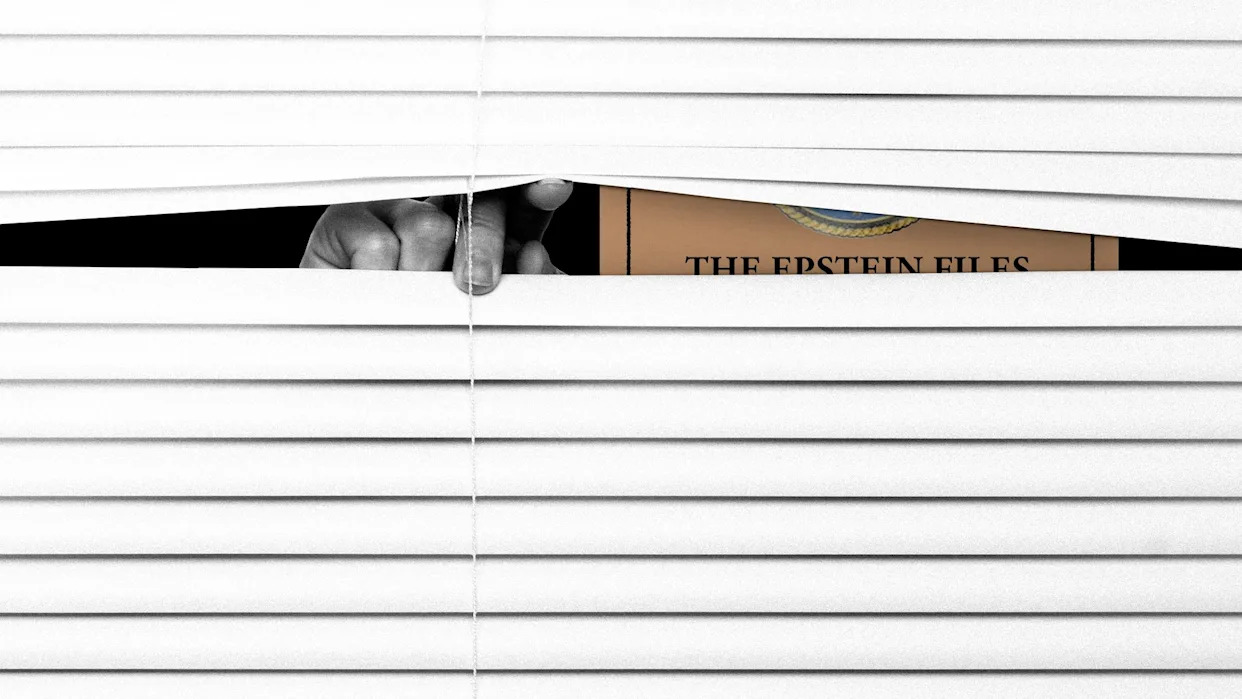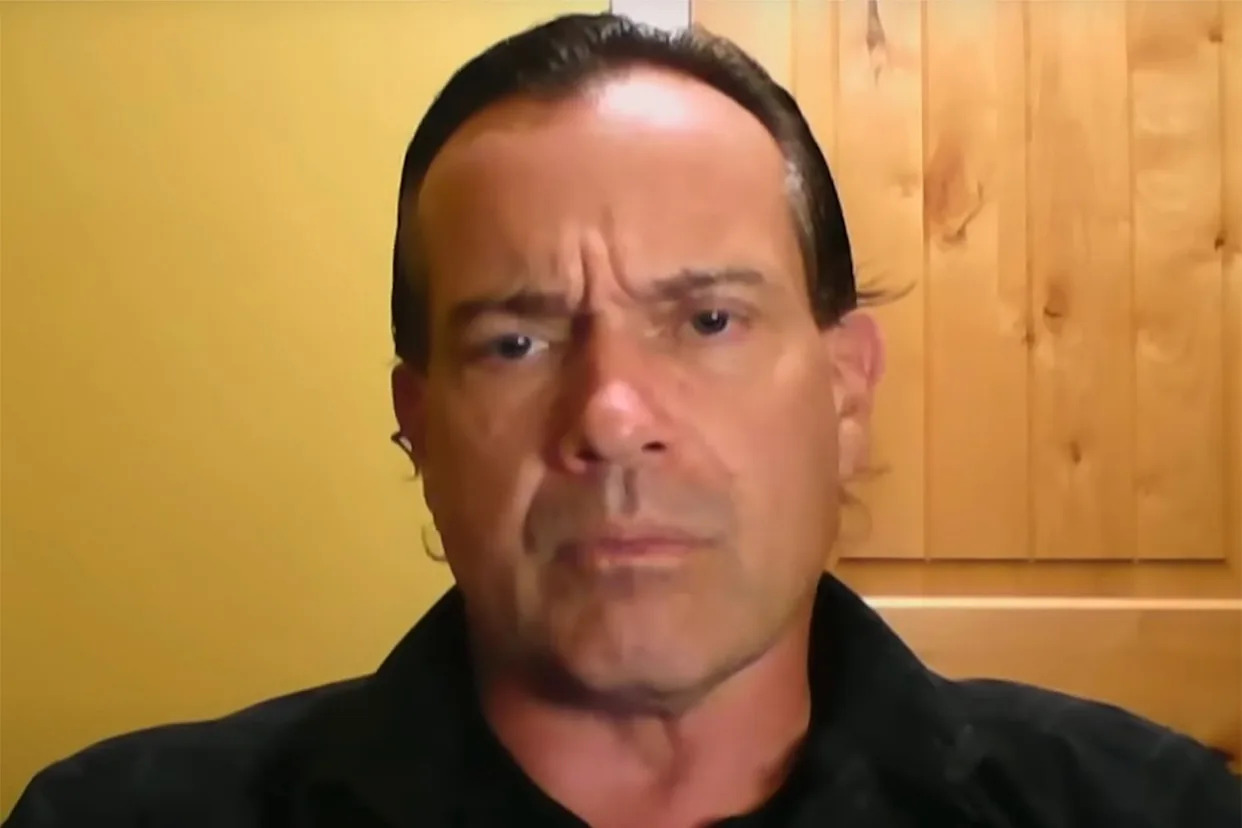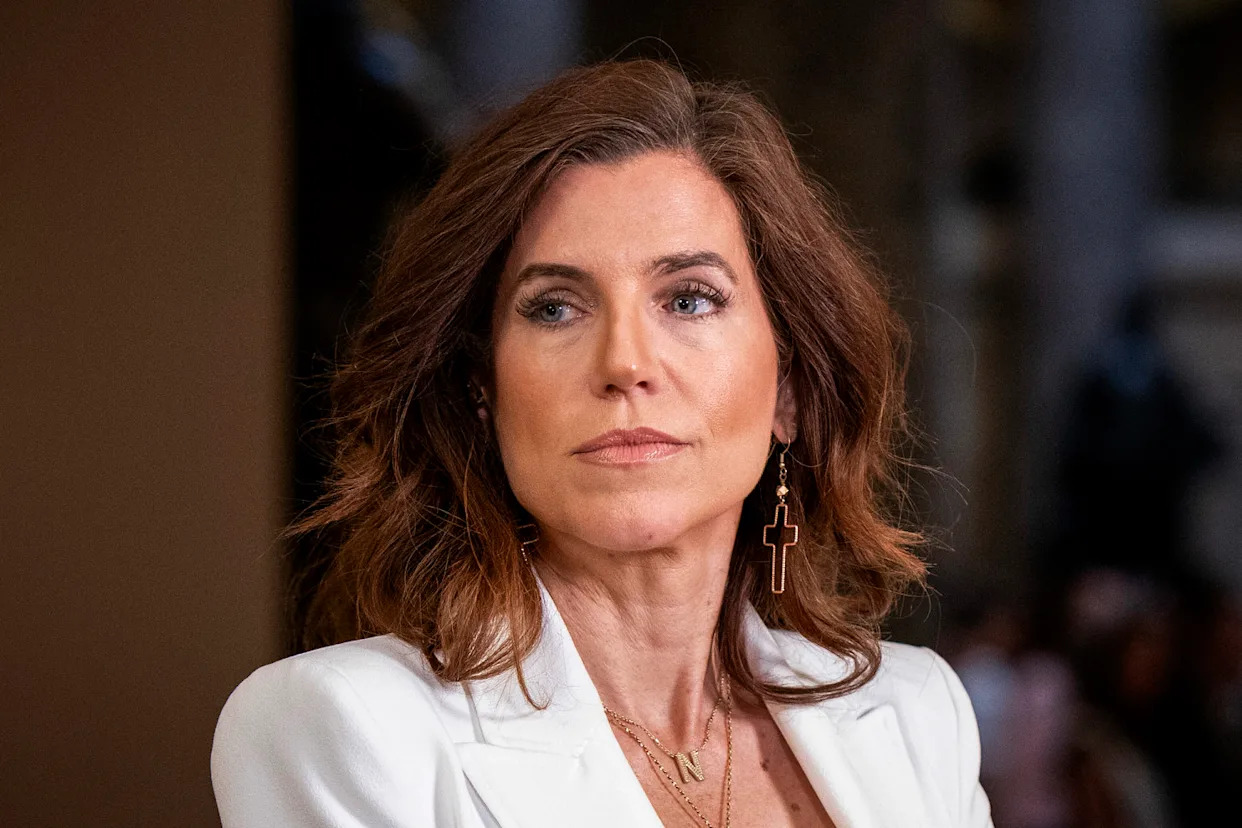
The Atlantic Daily, a newsletter that guides you through the biggest stories of the day, helps you discover new ideas, and recommends the best in culture. Sign up for it here.
Jeffrey Epstein’s “client list” is the conspiracy theory that may never die. A secret document detailing all of the elite clients that Epstein allegedly sex-trafficked minors to—it’s something of a grail for QAnon adherents, TMZ watchers, and serious news readers alike. There is no proof that such a thing exists.
Yet President Donald Trump himself suggested that it did during his campaign, and pledged to release it before a disastrous backtrack from the Department of Justice last month. Now, in a poll released Monday, nearly two-thirds of Americans said they believe that the Trump administration is hiding something, and 71 percent said they still believe that the list is real. Meanwhile, Representative Marjorie Taylor Greene has demanded that the list be released, Democrats are pushing the narrative that the Trump administration is orchestrating a cover-up, and yesterday the House subpoenaed the DOJ for additional files related to the case.
To be clear, many unanswered and valid questions remain about Epstein. Before his death, he was charged with trafficking and abusing, as it read in the indictment, “a vast network” of dozens of underage girls. Many still wonder why he was permitted to carry on with his crimes for so long, whether other people who were complicit in them have escaped justice, and how much President Trump may have known while the two were friends. Trump’s name reportedly appears in files that have been redacted by the FBI, though he has repeatedly denied personal knowledge of Epstein’s crimes and says their relationship ended in 2004.
[David A. Graham: Donald Trump doesn’t want you to read this article]
The specific idea of a client list, though, has taken on a life of its own. No one can demonstrate that the list doesn’t exist, so people will continue to insist that it does—that it is being kept from them. There’s a certain logic to their belief, because a similar document has been seen already. In 2015, Gawker published Epstein’s address book, which was full of names of celebrities and politicians. He apparently kept meticulous records and liked putting all of his famous contacts together in one place. And so the idea of a client list feels plausible to many people because they’ve had a mental image of it for 10 years now.
Moreover, Trump has created a “where there’s smoke there’s fire” effect in the past several weeks. The president has vacillated among suggesting that he has no obligation to talk about Epstein, speculating that political foes may have fabricated parts of the Epstein file, attempting to placate his supporters by ordering the release of grand-jury testimony about the case (which cannot be unsealed, a federal judge ruled), and deflecting (“you ought to be talking about Bill Clinton”).
There’s a useful parallel between the government’s handling of the Epstein case and its investigation into the John F. Kennedy assassination. That assassination, of course, launched a million conspiracy theories: Most Americans still believe that the shooter, Lee Harvey Oswald, did not act alone. One theory holds that the CIA was somehow involved, which has led people to search for hidden evidence within the government’s own records—much as we’ve seen with the Epstein case.
In 1967, Jim Garrison, the district attorney of New Orleans, ended up going down this road. He was re-investigating the case after receiving tips that Oswald, a New Orleans native, had worked with locals in a plot to kill the president. Long and complicated story short, Garrison would eventually subpoena CIA Director Richard Helms, demanding that he produce a photograph that purportedly showed Oswald with a CIA officer in Mexico City in 1963—cementing a link between the killer and the intelligence agency.
There was only a slim reason to think such a photo might exist. Garrison was extrapolating from an existing controversy over a photo that the CIA had provided to the Warren Commission years before. That photo showed an unknown man in Mexico City; it was labeled as a photo of Oswald but was clearly not him. Garrison’s theory was that there had been a swap. “It’s perfectly clear that the actual picture of Oswald and his companion was suppressed and a fake photo substituted,” he said. The government had no way to prove that he was wrong—to prove that there was no such photo. Garrison took his accusations all the way to a highly publicized trial in 1969. His theory of the case fell apart in court for unrelated reasons, but his many notions linger to this day. (He is the hero of the 1991 blockbuster film JFK.)
The Kennedy assassination still features many unknowns, and information is still being released about it in drips and drabs—previewing, perhaps, the future of disclosure around the Epstein case. Last month, the CIA released assassination files that researchers had been requesting for more than 20 years. They pertained to a specific CIA officer who some think may have known or worked with Oswald in New Orleans. In the 1970s, the same CIA officer was assigned to work with the House Select Committee on Assassinations and help them in their re-investigation of Kennedy’s death. He was using a different name by then, and the committee did not know it was the same person. He blatantly deceived Congress and actually thwarted their efforts to understand whatever had happened in New Orleans. The latest batch of files still didn’t reveal a direct connection between this officer and Oswald, but that hasn’t put the issue to bed.
[Read: Conspiracy theorists are turning on the president]
That the CIA maintained its secrecy around the officer for decades is what has made curiosity linger. The historian Gerald Posner was one of the public figures (along with the novelist Don DeLillo and the writer Norman Mailer) who’d signed an open letter asking for the release of these files back in 2003, a decade after he wrote a definitive book affirming the theory that Oswald acted alone. He recently told me that he’s disgusted with the CIA for taking so long to provide them—not because he thinks they shed new light on the Kennedy assassination but for just the opposite reason. He thinks they really don’t, but that hiding them encourages people to speculate ever more darkly. The CIA drags its feet, and when the documents are finally released, they usually have “nothing to do with the assassination,” Posner said. “But it’s often too late to explain that.”
This dynamic—in which defensiveness and reflexive secrecy lead to prolonged struggles over information that may or may not be important—has been a recurring problem throughout modern U.S. history. In her 2008 book, Real Enemies: Conspiracy Theories and American Democracy, World War 1 to 9/11, the historian Kathryn Olmsted argues that selective opacity is one of the key reasons that Americans distrust their government. The passage of the Freedom of Information Act in 1966 democratized access to information, she argues, yet also left citizens baffled and frustrated when documents were refused to them or granted only with heavy redactions. The government’s “ambivalence” about providing information “sometimes had the effect of frightening citizens rather than reassuring them,” Olmsted writes.
There are good reasons that not all of the Epstein files can be released—chief among them, the privacy of victims—but Americans are not wrong to think the government is being less transparent than it could be. The administration could release more than it has, which Congress is currently pressuring it to do. Within that context, why would people believe Trump or the FBI when they say that a client list doesn’t exist? I posed this question to Mark Fenster, a professor at the University of Florida’s law school who often writes about government transparency and conspiracy theories. Can you ever convince people that there is no list? “No, you can’t,” he said. “You can’t convince people that all of the pertinent JFK-assassination documents have been released. You can’t convince people who believe otherwise that all the truth is out on Jeffrey Epstein.” (Especially because it currently isn’t.) “That’s just a flat no,” he went on. “Rarely do I say flat nos, but that’s just a flat no.”
Like the Epstein case, Kennedy-assassination skepticism demonstrates two opposing impulses. The first, to speculate wildly. The second, to doggedly pursue more and better information, sometimes so stubbornly that it approaches irrationality in itself. These past few weeks have also brought to mind the Kennedy researcher Harold Weisberg, whose early books were a countercultural phenomenon and who was known for his diligent, insistent filling of FOIA requests. He wanted a specific report that he thought must exist about the spectrographic testing used on the Dallas crime-scene bullets; he was told that the FBI had looked for such a report and couldn’t find anything. He appealed four times before the D.C. Circuit ruled in 1983 that he had to stop. The decision stated that if an agency could prove it had conducted a thorough search for the requested material, it did not also have to prove the negative—that the material never existed or had previously been destroyed. Yet, of course, the court couldn’t compel him to stop wondering.
Nobody can make Americans stop wondering about a “client list” either. It can’t stay on the front page indefinitely, but people won’t forget about it. Epstein will become part of the American cultural backdrop, like Hunter Biden’s computer, 9/11 trutherism, Kennedy, chemtrails, Roswell, and QAnon. At certain times, such conspiratorial thinking and refusal to accept the evidence will become dangerous—people will spin up fantasies that result in acts of defamation or threats of violence. At other times, it will just be part of the daily chatter.








Comments